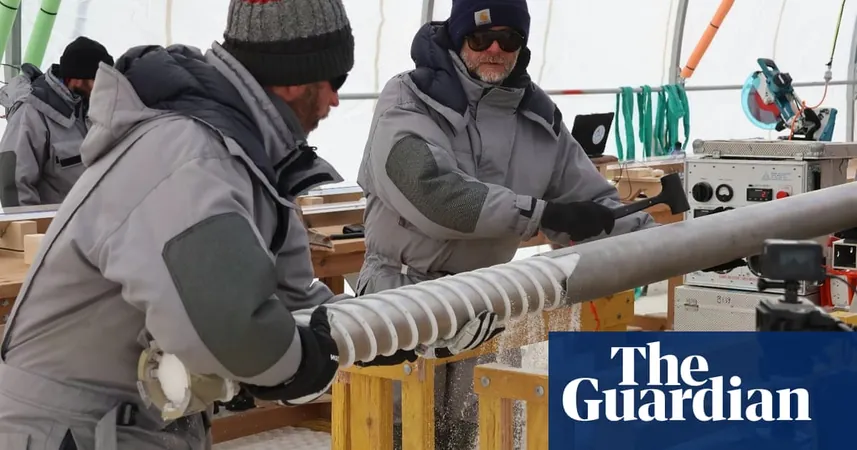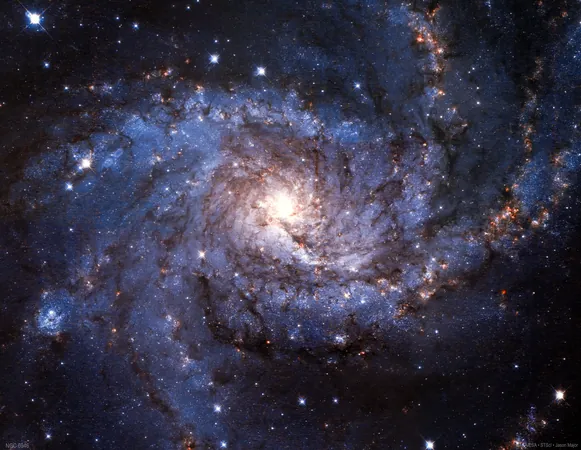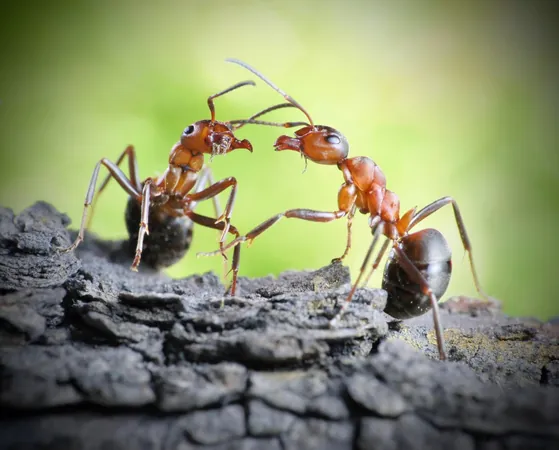
Australians Make Historic Leap in Quest for the World's Oldest Ice at Antarctic Outpost
2025-01-20
Author: Wei
Exploration Challenges in Antarctica
In one of Earth's most inhospitable regions, scientists are braving the elements in a quest to unlock secrets that lie within the planet's oldest ice. The challenges faced by modern-day explorers remind us of those encountered by legendary Antarctic figures like Robert Falcon Scott, who famously wrote, 'We took risks, we knew we took them,' even as he faced a deadly blizzard over a century ago. Today, paleoclimate scientists continue to push the limits of exploration in a region where the weather can turn against them in an instant.
The Million Year Ice Core Project
Dr. Joel Pedro, the lead scientist for Australia's ambitious Million Year Ice Core project, is determined to recover ice that formed more than a million years ago. This ancient ice harbors tiny bubbles of air that could illuminate our understanding of Earth’s climate history, providing crucial information as greenhouse gases continue to rise due to human activities.
Setbacks and Challenges During the Expedition
The 2022-23 Antarctic season presented significant hurdles. A vital 500-ton convoy had to trek over 1,200 kilometers from Casey Research Station to the remote drilling site at Little Dome C in East Antarctica. However, the mission faced a major setback when half the expedition team contracted COVID-19, forcing an evacuation and causing a five-week delay in the traverse.
Adverse Weather Conditions
Pedro's team aimed to fly from Casey to Concordia, located about 10 kilometers from their drilling site. But another round of fierce weather, including three blizzards, further complicated their plans. As winter approached, temperatures were set to plummet, making drilling impossible and forcing the scientists to reconsider their strategy.
Rival Projects and New Discoveries
Meanwhile, a rival European project called Beyond Epica, operating just 4 kilometers away, successfully drilled down to bedrock, extracting a 2.8-kilometer-long ice core estimated to be 1.2 million years old. Faced with this situation, the Australian team pondered whether to continue with their plan at Little Dome C or to venture to a new site entirely.
Encouraging data from new modeling suggested that a nearby location, Dome C North, might possess even older ice—possibly dating back up to 2 million years. This revelation provided a silver lining to last season's challenges, prompting Pedro to make the bold decision to relocate.
Arrival at Dome C North
On Christmas Eve, after a grueling 18-day journey through the brutal Antarctic terrain, the convoy finally arrived at Dome C North. The scientists celebrated their arrival with a festive gathering at the nearby Concordia station, a stark but heartening contrast after a season fraught with difficulties.
Drilling Begins
With the new year ushering in renewed hope, the research and drilling team hastily erected a specially designed drill shelter, built to endure temperatures as low as -80 degrees Celsius. Finally, on January 3, drilling commenced, with the team reaching a remarkable depth of 80 meters within just two days.
Future Goals and Research
As they aim to reach 150 meters by the end of January, the scientists are set to extract ice cores that offer a crucial climate record spanning the last 4,000 years. Over the next five years, they plan to continue drilling until they hit the bedrock, over 3 kilometers down.
Once extracted, the ice cores undergo meticulous processing, where they are measured, weighed, and prepared for transport back to Australia for further analysis. Through careful examination of oxygen isotopes, chemical traces of ancient volcanic eruptions, and records of greenhouse gas concentrations, researchers hope to shed light on historical shifts in Earth’s climate.
Implications of the Research
If successful in retrieving older ice cores than those obtained by their European counterparts, the Australians will break new ground in climate research, extending the scientific record beyond the mid-Pleistocene transition—a pivotal period that reshaped Earth’s climatic cycles.
Dr. Pedro emphasizes the significance of their work, saying, 'It’s about understanding long-term climate stability and what sets the Earth’s climate state.' The findings could reshape our understanding of climate systems and enhance the accuracy of models used to predict future climate scenarios—a crucial endeavor as humanity grapples with the ominous reality of climate change.
Conclusion: The Future of Climate Research
Antarctica remains a frontier of discovery, and if Pedro and his team succeed, the lessons learned from the ancient ice could prove essential for future generations. Are we ready to uncover secrets that may change everything we know about our planet’s climate? The race against time and nature in the icy wilderness has just begun!



 Brasil (PT)
Brasil (PT)
 Canada (EN)
Canada (EN)
 Chile (ES)
Chile (ES)
 Česko (CS)
Česko (CS)
 대한민국 (KO)
대한민국 (KO)
 España (ES)
España (ES)
 France (FR)
France (FR)
 Hong Kong (EN)
Hong Kong (EN)
 Italia (IT)
Italia (IT)
 日本 (JA)
日本 (JA)
 Magyarország (HU)
Magyarország (HU)
 Norge (NO)
Norge (NO)
 Polska (PL)
Polska (PL)
 Schweiz (DE)
Schweiz (DE)
 Singapore (EN)
Singapore (EN)
 Sverige (SV)
Sverige (SV)
 Suomi (FI)
Suomi (FI)
 Türkiye (TR)
Türkiye (TR)
 الإمارات العربية المتحدة (AR)
الإمارات العربية المتحدة (AR)